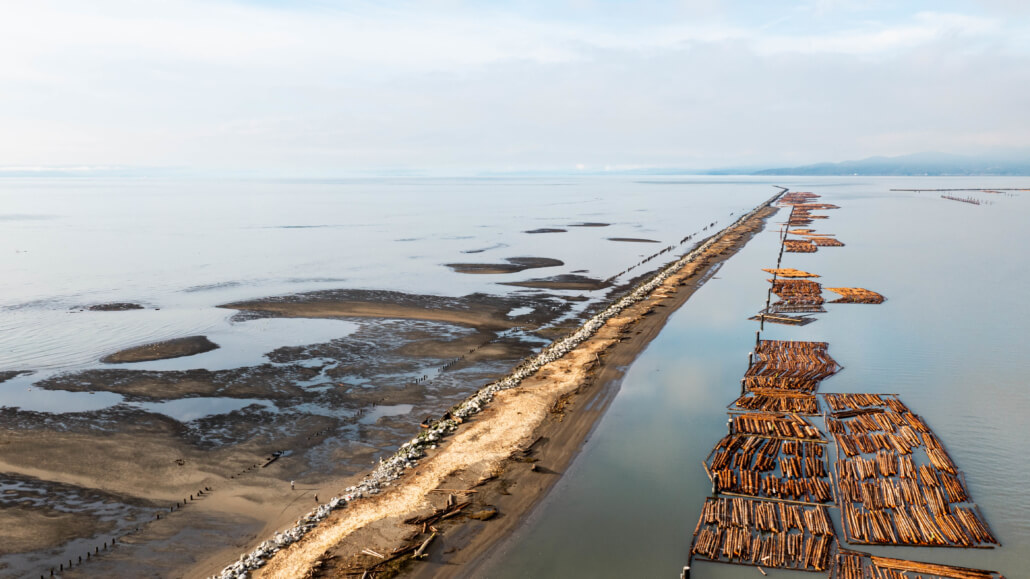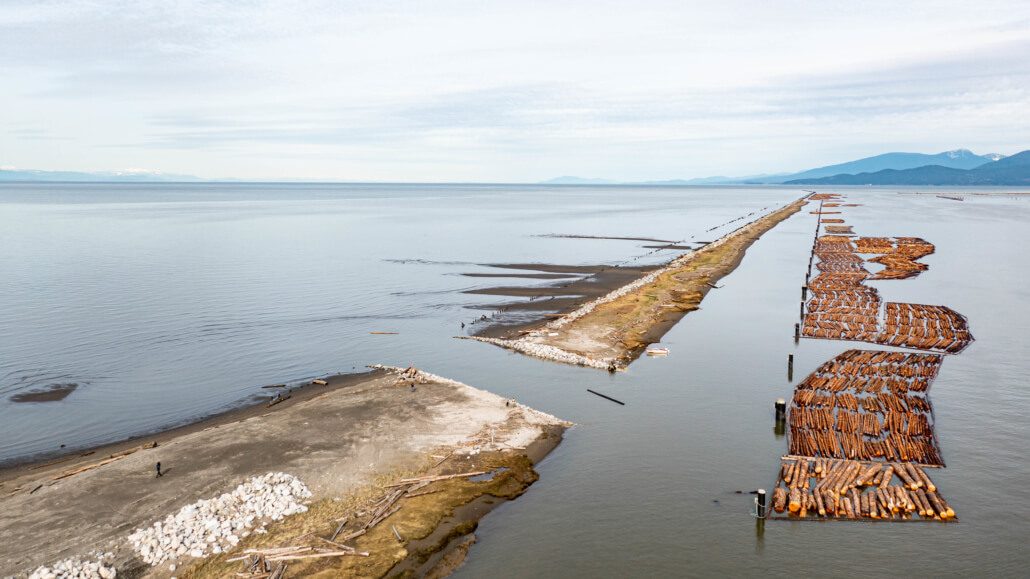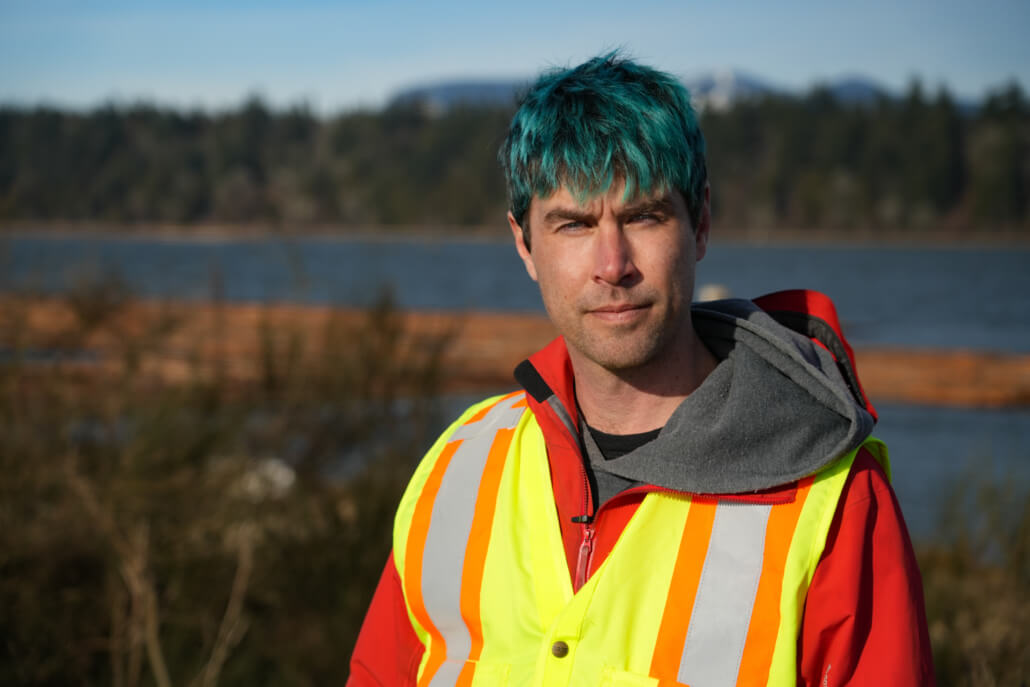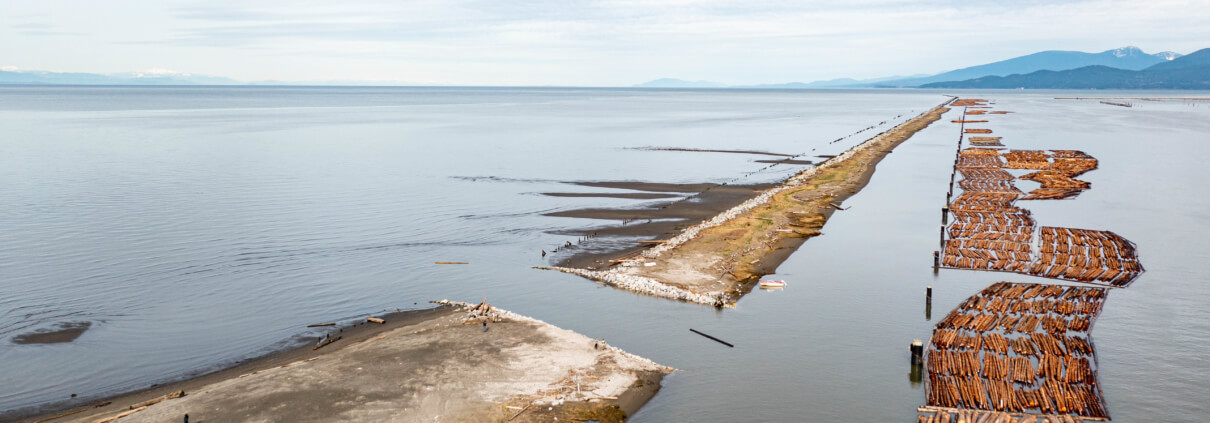Game Changer: Immediate success for salmon habitat restoration in the Fraser River
Cut off from their essential habitat for more than 100 years, threatened Fraser Chinook salmon find new passage via large-scale estuary project.


A salmon habitat restoration project creates an opening in a seven-kilometre-long structure that has blocked salmon habitat for over a century. Before (top) and after (bottom). Photos by Alex Harris / Raincoast Conservation Foundation.
The North Arm of the Fraser River Jetty habitat restoration project, estimated at $650,000, provides a unique solution to a century-old problem. The jetty, a 7-kilometre-long barrier, has been forcing young salmon from the freshwater of the Fraser River’s North Arm into the saltier, deeper water of the Strait of Georgia for more than 100 years. As juvenile salmon rely on the brackish marsh habitats that lie in between the river and the Strait of Georgia to rear and feed before they transition to the ocean, the jetty presents a serious barrier to their well being.
“Estuaries are really important nursery habitats for many species including juvenile Pacific salmon,” says Dr. Isobel Pearsall, director of PSF’s Marine Science program. “This environment allows them to obtain rich food resources so they can grow bigger before they migrate into the open ocean.”
As part of the project, Raincoast Conservation Foundation made a deliberate breach in the North Arm jetty in early March; they have been monitoring the 30-metre wide opening, and are already observing juvenile salmon passing through.
This immediate success makes this habitat restoration project rare.
The project is led by the Raincoast Conservation Foundation and its partners, including the Pacific Salmon Foundation (PSF), Ducks Unlimited, Tsawwassen First Nation, and Lower Fraser Fisheries Alliance.
Harrison River Chinook used to be the most productive Chinook salmon population in the Fraser, but has been declining for more than a decade and is now considered threatened by the Committee on the Status of Endangered Wildlife in Canada (COSEWIC). Juvenile Chinook, likely from the Harrison River, have been captured using the breach passage during spring 2022.
“Juvenile salmon rely on access to estuary habitats to adapt to salty waters and for important feeding opportunities that can improve their ability to survive in the ocean,” says Dave Scott, a biologist with Raincoast and a PhD-candidate in the Pacific Salmon Ecology and Conservation Lab at UBC.

Dave Scott, a PhD candidate in the Pacific Salmon Ecology and Conservation Lab at UBC and biologist with Raincoast Conservation Foundation. Photo by Linda Aylesworth.
The Lower Fraser River and estuary is a highly modified environment with more than 80% of tidal marsh habitats, which juvenile salmon rely on, either lost or inaccessible. On the Fraser delta, this includes the jetties, causeways, and training walls that were built to control the arms of the river for ship navigation.
This restoration follows on Raincoast’s success creating three breaches in the Fraser River’s South Arm on the Steveston Jetty in 2019. Raincoast biologists found high numbers of juvenile salmon passing through to reach the marsh on Sturgeon Bank, instead of being swept out to the Georgia Strait.
Raincoast plans on creating two more 30-metre-wide breaches in the North Arm Jetty to continue to restore natural migration pathways for juvenile salmon, other fish species, and natural flow of freshwater and fine sediments.
“Given our understanding of how vital estuaries are, it is only right that we start to fix some of the damage we humans have caused. Projects like this are really important to address some of the issues we have caused to juvenile salmon habitat…and hopefully give these fish a fighting chance on their way into the open ocean,” says Dr. Pearsall.
This project was made possible by funding from the Pacific Salmon Foundation, the Province of BC and the Government of Canada.


